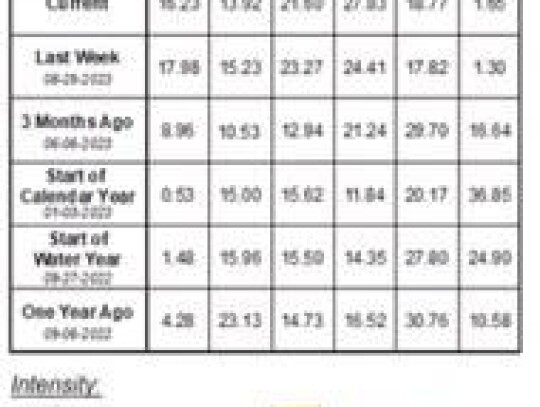Despite drizzle throughout the majority of the day on Monday of this week, Greenwood County (and the majority of Kansas) is still experiencing high drought levels.
According to Agriculture. com, a study shared last Thursday, September 7, noted that a majority of Greenwood County is in extreme drought, with portions of Greenwood County being approximately 12 inches below the average precipitation, from April-September. The figure comes from climatology from 1951-2022.
According to the release, several counties reported no precipitation at all. Maps generated by the Iowa Environmental Mesonet indicated a big difference in precipitation departures between eastern and western Kansas, during recent months.
Greenwood and Linn counties are struggling, with over 11 inches less precipitation than the average since April 4 (Greenwood is showing at -11.98), while Meade and Kearny counties in western Kansas have positive departures of 11.1 inches than the average.
A drought map published September 5 shows roughly 20% of the state covered by D3 extreme drought conditions.
More than 28% of the state reports D2 severe drought.
D1 moderate drought spans another 21% of the state.
Almost 14% of the state is abnormally dry.
Just 16.2% of Kansas is free of drought stress. That number is down from 17.9% last week, but conditions in the state have improved from the start of 2023, when just 0.25% of the state reported no drought.
Of the state’s 105 counties, 84 (80%) have USDA disaster designations.
The National Integrated Drought Information System reports July 2023 was the 33rd-wettest on record for the state. Records go back to 1895.
However, 2023 is shaping up to be the 54th-driest year in history for the Sunflower state.
(Images courtesy of droughtmonitor.unl.edu)



